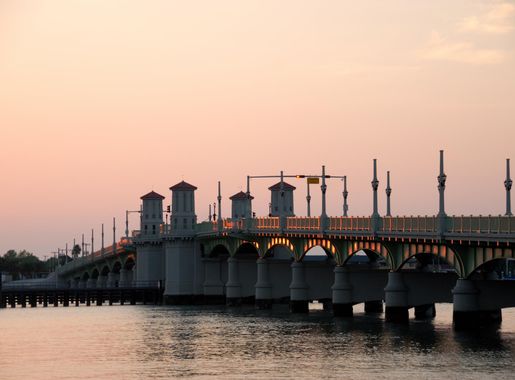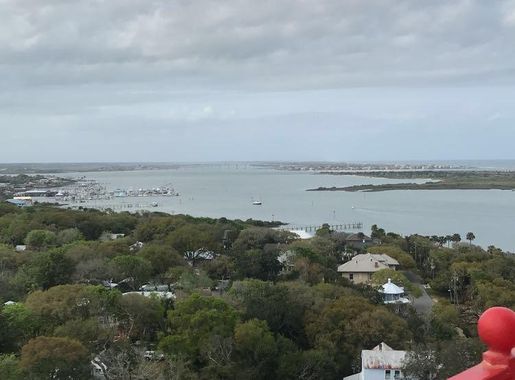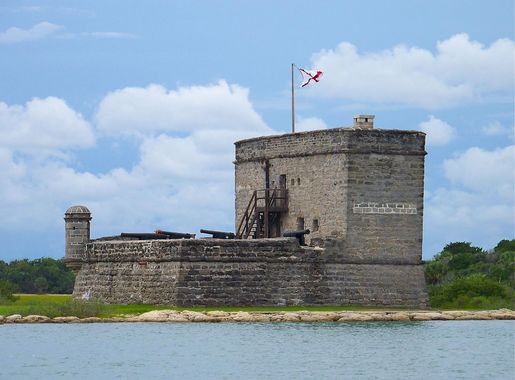
St. Augustine Beach: Sun, Sand, and History
Discover the sun-soaked shores and rich history of St. Augustine Beach, a perfect blend of relaxation and adventure on Florida's Atlantic coast.
St. Augustine Beach, located on Anastasia Island in Florida, is a charming coastal community known for its pristine sandy shores and rich history. This picturesque beach offers a perfect blend of relaxation and adventure, making it an ideal destination for families, couples, and solo travelers alike. The wide shoreline and gentle waves provide excellent conditions for sunbathing, swimming, and beachcombing. For those interested in water sports, St. Augustine Beach is popular for surfing, paddleboarding, and kayaking. Beyond the beach, the area boasts numerous attractions that capture the historical essence of St. Augustine, the oldest city in the United States. Visitors can explore the nearby St. Augustine Lighthouse, which offers stunning views of the coastline, or take a short drive into the historic downtown area to visit landmarks such as the Castillo de San Marcos and the Colonial Quarter. The beach community itself is dotted with charming cafes, vibrant restaurants, and unique shops, providing ample opportunities to savor local flavors and pick up souvenirs. Nature enthusiasts will appreciate the proximity to Anastasia State Park, a natural paradise where you can hike, bird-watch, or simply enjoy the serene environment. The park's diverse ecosystems are home to various species of wildlife, making it a great spot for eco-tourism. Whether you're seeking relaxation, adventure, or a bit of both, St. Augustine Beach offers a memorable experience for every traveler.
Local tips in St. Augustine Beach
- Visit during the off-peak season (September to November) for fewer crowds and more affordable accommodations.
- Don't miss the St. Augustine Lighthouse for breathtaking views and a dose of local history.
- Try the local seafood at the beachside restaurants for a true taste of the coastal cuisine.
- Pack sunscreen and stay hydrated, as the Florida sun can be quite intense.
- Rent a bike to explore the area more easily and enjoy the scenic coastal views.
St. Augustine Beach: Sun, Sand, and History
St. Augustine Beach, located on Anastasia Island in Florida, is a charming coastal community known for its pristine sandy shores and rich history. This picturesque beach offers a perfect blend of relaxation and adventure, making it an ideal destination for families, couples, and solo travelers alike. The wide shoreline and gentle waves provide excellent conditions for sunbathing, swimming, and beachcombing. For those interested in water sports, St. Augustine Beach is popular for surfing, paddleboarding, and kayaking. Beyond the beach, the area boasts numerous attractions that capture the historical essence of St. Augustine, the oldest city in the United States. Visitors can explore the nearby St. Augustine Lighthouse, which offers stunning views of the coastline, or take a short drive into the historic downtown area to visit landmarks such as the Castillo de San Marcos and the Colonial Quarter. The beach community itself is dotted with charming cafes, vibrant restaurants, and unique shops, providing ample opportunities to savor local flavors and pick up souvenirs. Nature enthusiasts will appreciate the proximity to Anastasia State Park, a natural paradise where you can hike, bird-watch, or simply enjoy the serene environment. The park's diverse ecosystems are home to various species of wildlife, making it a great spot for eco-tourism. Whether you're seeking relaxation, adventure, or a bit of both, St. Augustine Beach offers a memorable experience for every traveler.
When is the best time to go to St. Augustine Beach?
Iconic landmarks you can’t miss
Castillo de San Marcos National Monument
Discover the rich history and stunning architecture of Castillo de San Marcos, America's oldest masonry fort, in enchanting St. Augustine, Florida.
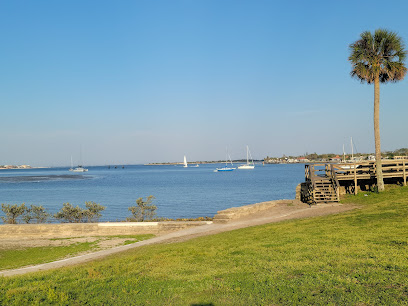
St. Augustine Lighthouse & Maritime Museum
Uncover the maritime history and stunning views at St. Augustine Lighthouse & Maritime Museum, a captivating destination in Florida.
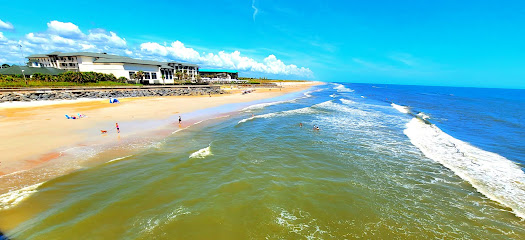
Old Town Trolley Tours St Augustine
Experience the rich history and vibrant culture of St. Augustine with Old Town Trolley Tours, the best way to explore this historic city.

Ripley's Believe It or Not!
Explore the bizarre and the extraordinary at Ripley's Believe It or Not! in St. Augustine, Florida - a museum of oddities and wonders for all ages.

Ponce de Leon's Fountain of Youth Archaeological Park
Explore the legendary site of Ponce de Leon's Fountain of Youth in St. Augustine, where history and nature intertwine in a captivating experience.
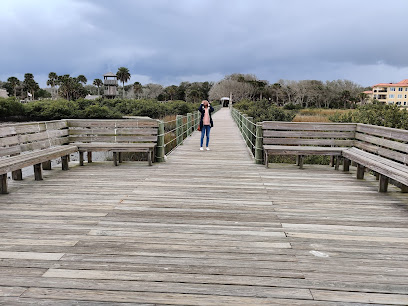
Anastasia State Park
Experience the breathtaking landscapes and diverse wildlife at Anastasia State Park, a true gem for outdoor lovers in St. Augustine, Florida.
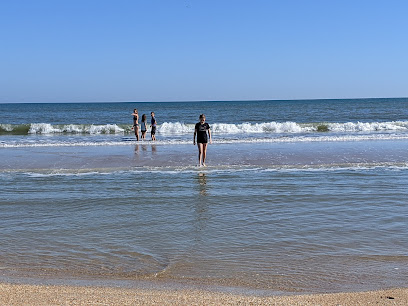
Old Jail Museum
Discover the intriguing history of the Old Jail Museum in St. Augustine, a must-see attraction that reveals the city's storied past.
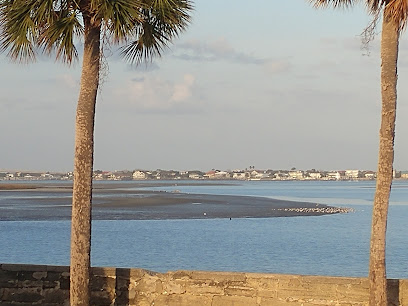
Lightner Museum
Discover the Lightner Museum in St. Augustine - a treasure trove of 19th-century art and antiques in a stunning historic setting.
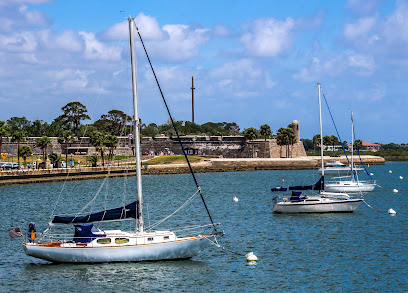
Fort Matanzas National Monument
Visit Fort Matanzas National Monument for a captivating blend of history, stunning coastal views, and rich wildlife in St. Augustine, Florida.
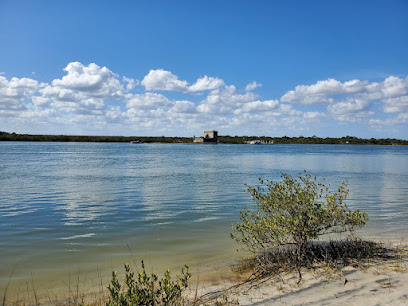
Cathedral Basilica of St. Augustine
Discover the historical and architectural marvel of the Cathedral Basilica of St. Augustine, a spiritual haven in Florida's oldest city.
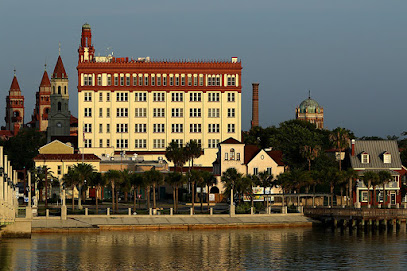
Marineland Dolphin Adventure
Experience the magic of marine life at Marineland Dolphin Adventure, where unforgettable dolphin encounters await in St. Augustine, Florida.
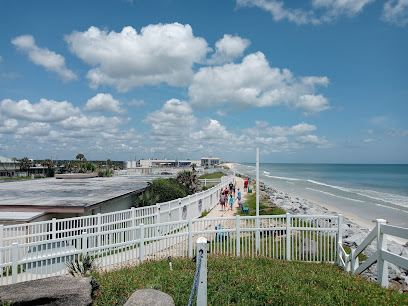
Potter's Wax Museum
Explore the enchanting Potter's Wax Museum in St. Augustine, where history and artistry blend through lifelike wax figures and captivating exhibits.
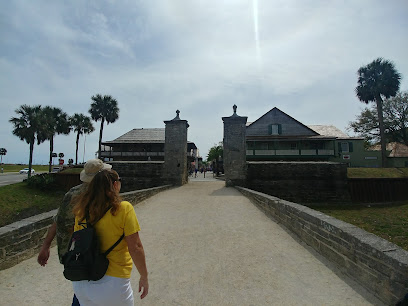
Guy Harvey Resort St. Augustine Beach
Discover the perfect blend of beachfront luxury and historic charm at Guy Harvey Resort St. Augustine Beach, your gateway to Florida's coastal treasures.
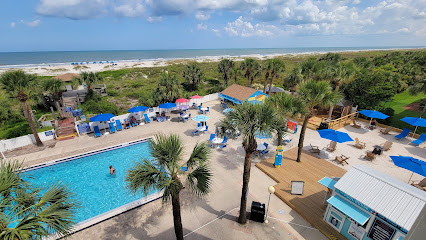
Vilano Beach Fishing Pier
Discover the beauty of Vilano Beach Fishing Pier, where fishing meets stunning coastal views and local culture in St. Augustine, Florida.
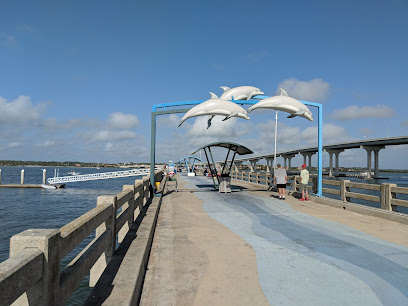
Bridge of Lions
Explore the enchanting Bridge of Lions in St. Augustine, a historic drawbridge offering stunning views, rich history, and a perfect spot for memorable photos.
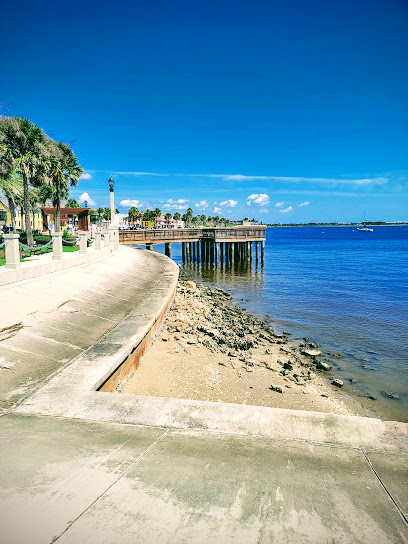
Unmissable attractions to see
Castillo de San Marcos National Monument
Discover the historic Castillo de San Marcos, an iconic fortress in St. Augustine, where history comes alive amidst stunning river views.
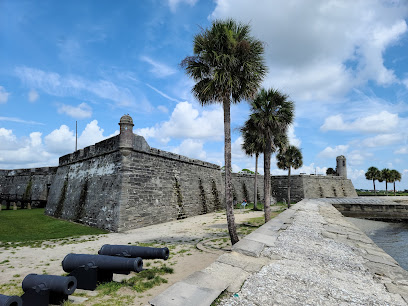
St. Augustine Lighthouse & Maritime Museum
Explore the St. Augustine Lighthouse & Maritime Museum, a historical treasure with breathtaking views and fascinating maritime heritage.
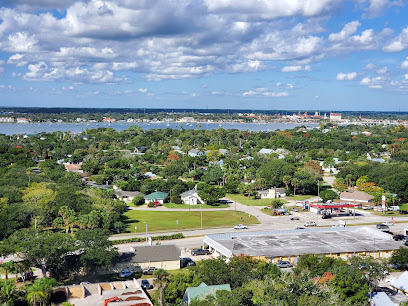
St. Augustine Alligator Farm Zoological Park
Explore the St. Augustine Alligator Farm Zoological Park, where adventure meets education in a lush, tropical setting filled with fascinating wildlife.

Ripley's Believe It or Not!
Experience the extraordinary at Ripley's Believe It or Not! in St. Augustine, a treasure trove of oddities and interactive exhibits for all ages.
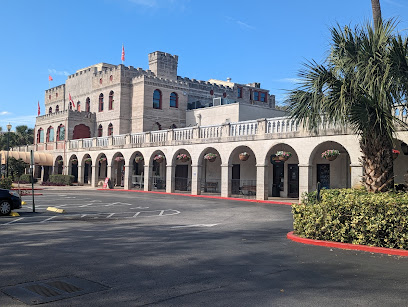
Ponce de Leon's Fountain of Youth Archaeological Park
Explore the legendary Fountain of Youth and uncover the rich history of St. Augustine at this enchanting archaeological park.

Anastasia State Park
Explore Anastasia State Park: a serene oasis of beaches, trails, and wildlife near historic St. Augustine, Florida, perfect for outdoor enthusiasts and nature lovers.
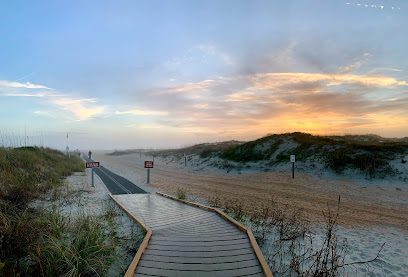
Old Jail Museum
Delve into the intriguing history of crime and punishment at the Old Jail Museum in St. Augustine, a captivating historical landmark and museum.
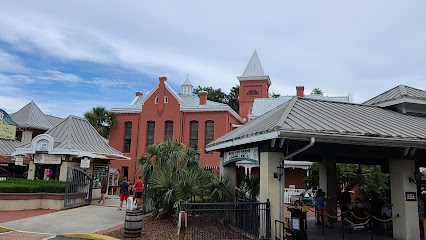
St. Johns County Ocean & Fishing Pier
Discover the scenic St. Johns County Ocean & Fishing Pier in St. Augustine, Florida – a perfect blend of stunning views, fishing, and coastal charm.
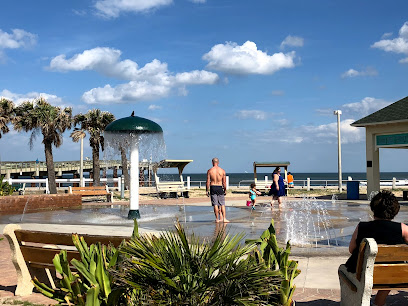
Florida Water Tours
Discover the beauty of St. Augustine's waterways with unforgettable boat tours and exciting water sports at Florida Water Tours.
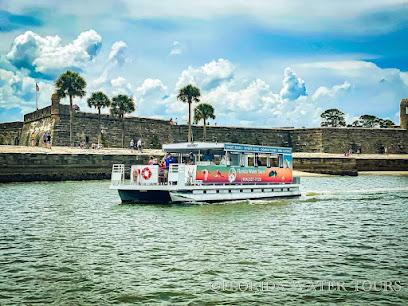
Lightner Museum
Explore the Lightner Museum in St. Augustine, Florida - a stunning showcase of art, history, and Gilded Age treasures in a breathtaking setting.
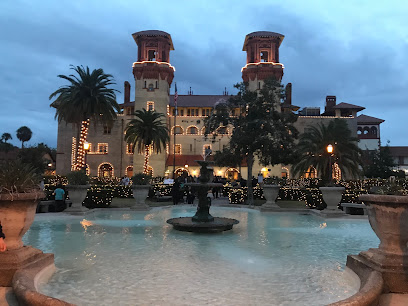
Fort Matanzas National Monument
Explore the historic Fort Matanzas National Monument, a 1742 Spanish fort offering scenic views and rich cultural heritage.
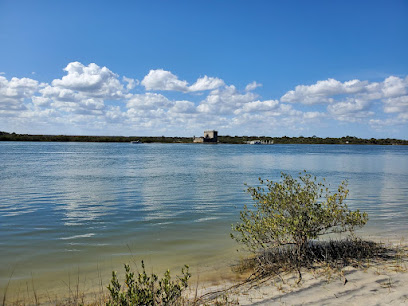
St. Augustine Pirate & Treasure Museum
Explore the thrilling world of piracy at the St. Augustine Pirate & Treasure Museum, where history and adventure come alive in every exhibit.

Medieval Torture Museum
Discover the grim realities of medieval justice at the Medieval Torture Museum in St. Augustine, a unique attraction for history enthusiasts.
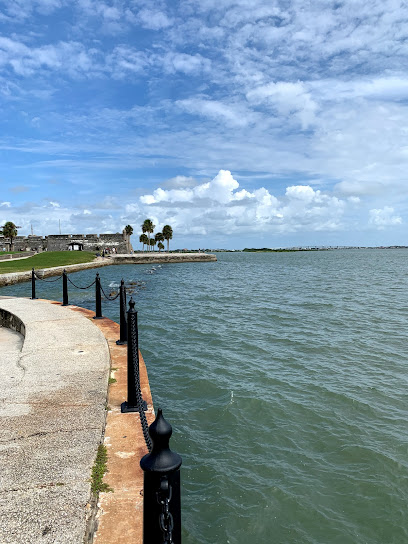
Saint Augustine Distillery
Experience the rich heritage and craftsmanship of local spirits at Saint Augustine Distillery, a historical landmark in Florida.
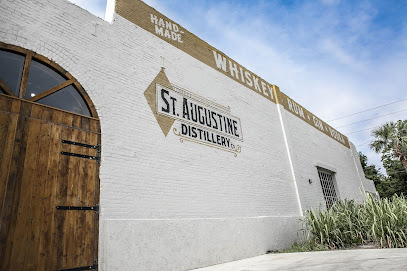
Marineland Dolphin Adventure
Dive into adventure at Marineland Dolphin Adventure, where unforgettable marine experiences await in beautiful St. Augustine, Florida.
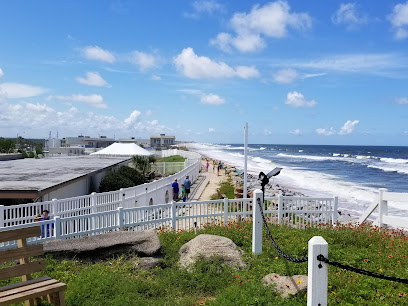
Essential places to dine
Harry's Seafood, Bar & Grille
Experience delectable seafood and Cajun cuisine at Harry's Seafood, Bar & Grille in historic St. Augustine - where flavors meet fun.
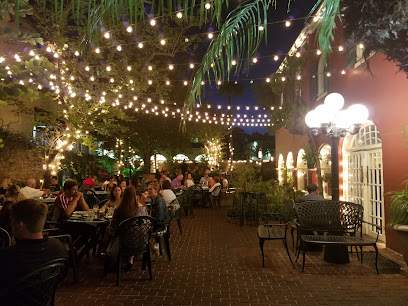
Salt Life Food Shack
Experience fresh seafood and beachside vibes at Salt Life Food Shack in St. Augustine - where every meal feels like a vacation.
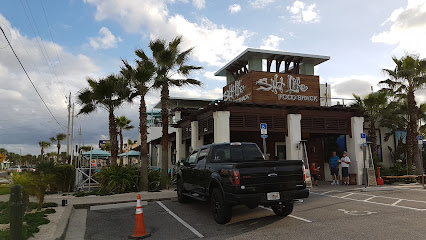
Sunset Grille
Experience fresh seafood and stunning ocean views at Sunset Grille in St. Augustine Beach - your ultimate dining destination.
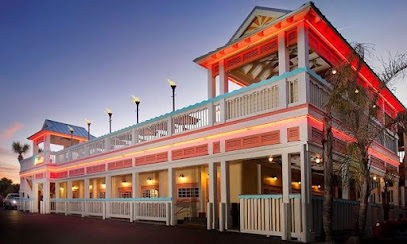
Beaches at Vilano
Discover flavorful seafood and Caribbean delights at Beaches at Vilano - your perfect family-friendly dining spot by the ocean.

The Conch House Restaurant
Experience fresh seafood and Caribbean flavors at The Conch House Restaurant in St. Augustine's scenic harbor.
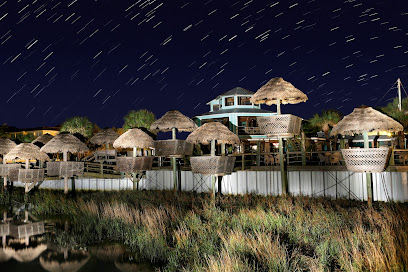
World Famous Oasis Restaurant
Savor exquisite American and seafood dishes at St. Augustine Beach's iconic dining destination, World Famous Oasis Restaurant.
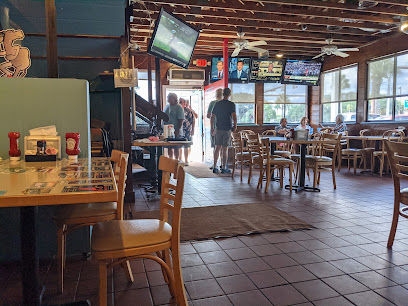
Beachcomber St. Augustine
Discover delicious seafood and family-friendly dining at Beachcomber St. Augustine, where coastal charm meets culinary delight.
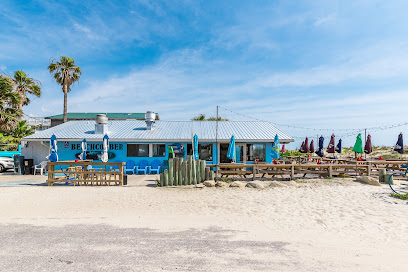
A1A Burrito Works
Savor authentic Mexican flavors at A1A Burrito Works in St. Augustine—your go-to spot for delicious burritos and tacos by the beach.
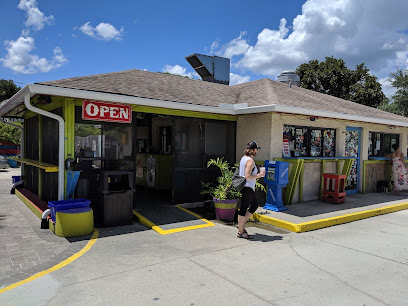
A1A Beachside Diner
Experience coastal dining at A1A Beachside Diner in St. Augustine, where fresh flavors meet stunning ocean views.
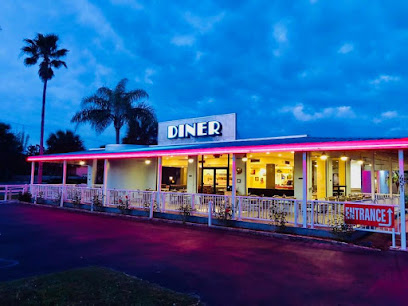
Kingfish Grill On the Water
Experience exquisite seafood dining with stunning waterfront views at Kingfish Grill On the Water in St. Augustine.
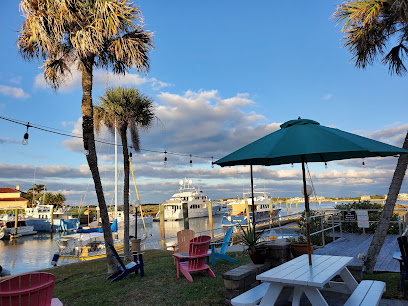
Salt Water Cowboys
Experience exquisite seafood dining at Salt Water Cowboys in St. Augustine – where fresh flavors meet stunning waterfront views.
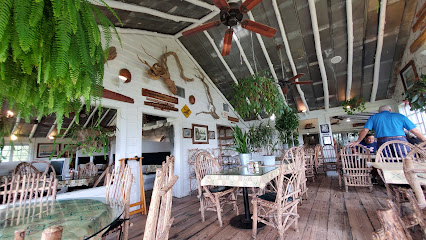
Gas Full Service Restaurant
Discover the flavors of the South at Gas Full Service Restaurant in St. Augustine—where comfort food meets warm hospitality.
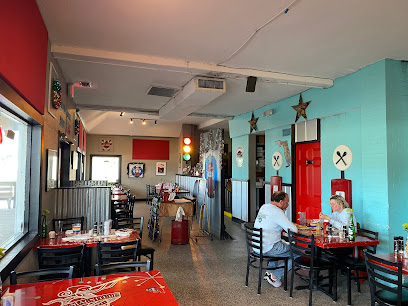
Black Molly Grill
Discover fresh seafood delights at Black Molly Grill, where stunning marina views meet flavorful dishes in historic St. Augustine.

Amici Italian Restaurant
Experience the rich flavors of Italy at Amici Italian Restaurant in St. Augustine - where authentic cuisine meets warm hospitality.
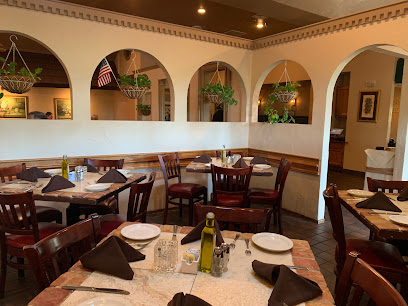
Anastasia Diner
Discover the charm of Anastasia Diner in St. Augustine - your go-to spot for hearty breakfasts with a local touch.
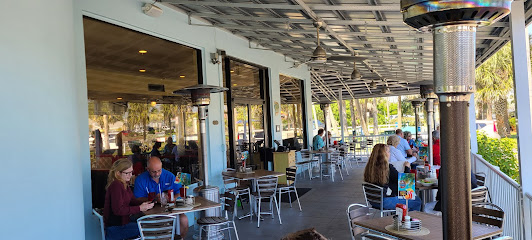
Markets, malls and hidden boutiques
Anastasia Plaza
Discover Anastasia Plaza in St. Augustine, a vibrant shopping mall perfect for dining, shopping, and enjoying Florida's coastal charm.
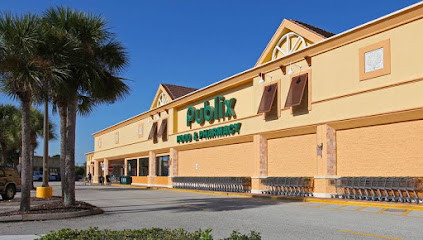
Island Beachwear
Discover the best swimwear and beach accessories at Island Beachwear, your ultimate shopping destination in St. Augustine Beach.
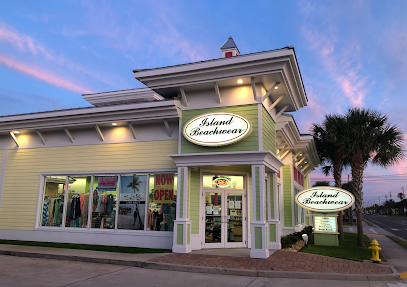
Alvin's Island Saint Augustine #751
Discover the essence of beach culture at Alvin's Island, where unique gifts and coastal treasures await every visitor in St. Augustine.

Pit Surf Shop
Discover the ultimate surf experience at Pit Surf Shop, your go-to destination for surf gear, rentals, and lessons in St. Augustine, Florida.
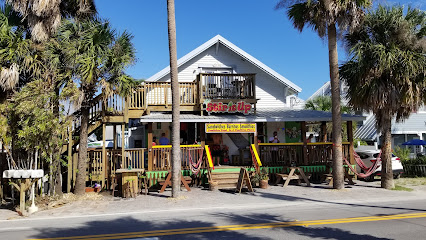
Fountain of Youth Gift Shop
Explore the Fountain of Youth Gift Shop for unique souvenirs and local crafts in the heart of St. Augustine's Historic District.
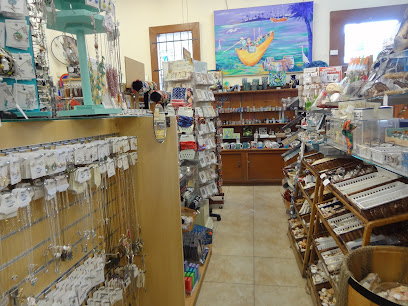
Ocean Breeze
Discover unique beachwear and souvenirs at Ocean Breeze, the must-visit clothing store in St. Augustine, Florida, where coastal style meets local charm.

Artsy Abode
Explore Artsy Abode, St. Augustine's premier gift shop and boutique for unique jewelry and fashion accessories crafted by local artisans.
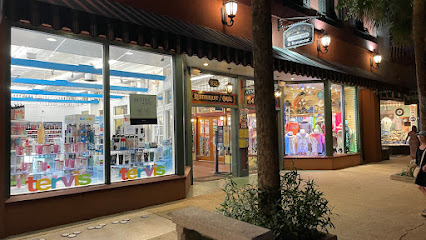
Aunt Matilda's Steampunk Trunk
Explore the enchanting steampunk universe at Aunt Matilda's Steampunk Trunk, St. Augustine's premier gift shop for unique novelties and treasures.
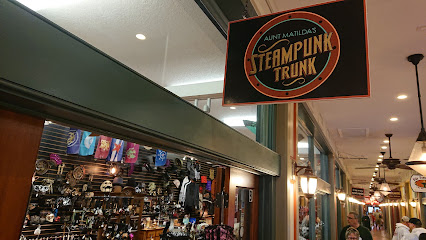
Fresh Market Island
Explore Fresh Market Island in St. Augustine for the finest meats, baked goods, seafood, and a curated selection of wines, perfect for every food lover.
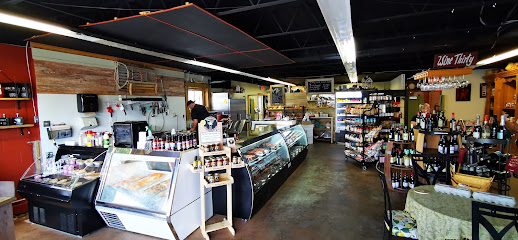
The Irish Gift Shop
Explore the charm of Ireland at The Irish Gift Shop in St. Augustine, where unique gifts and local treasures await every visitor.
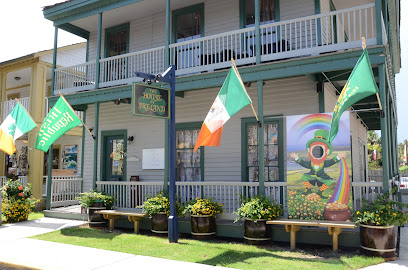
Shell Shop-Sunburst Trading Co
Explore unique treasures and local art at Shell Shop-Sunburst Trading Co in St. Augustine, where every purchase tells a story.
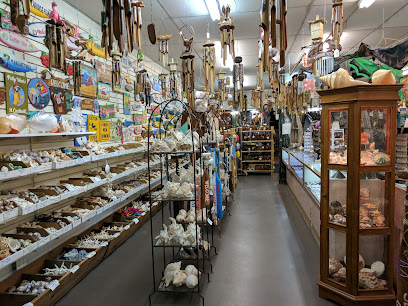
Aqua East Surf Shop
Explore the essence of surf culture at Aqua East Surf Shop in St. Augustine, offering gear, lessons, and a vibrant community for water and skate enthusiasts.
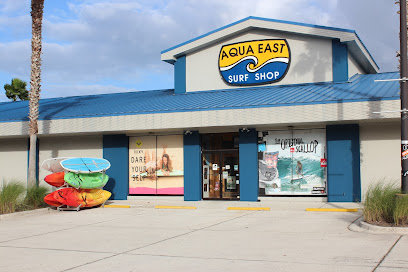
Anastasia Antique Center
Explore the Anastasia Antique Center, a St. Augustine gem offering unique antiques, vintage collectibles, and timeless treasures in a charming atmosphere.

Red Pineapple
Explore Red Pineapple Gift Shop in St. Augustine, where unique gifts and local crafts await every visitor in a charming atmosphere.

Cool and Collected Vintage & Antiques
Explore the charm of yesteryear at Cool and Collected Vintage & Antiques, a delightful destination for vintage clothing and timeless treasures in St. Augustine.

Essential bars & hidden hideouts
Salt Life Food Shack
Experience the vibrant atmosphere and fresh seafood at Salt Life Food Shack in St. Augustine, a must-visit for seafood lovers and beachgoers.
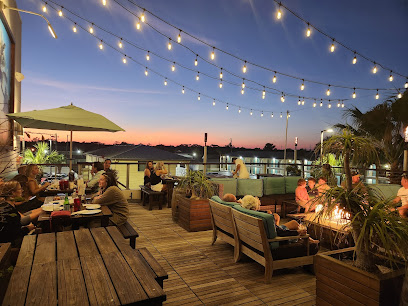
Sunset Grille
Experience the freshest seafood and breathtaking beach views at Sunset Grille in St. Augustine Beach, a perfect getaway for food lovers.

World Famous Oasis Restaurant
Experience the vibrant flavors and ocean views at St. Augustine Beach's World Famous Oasis Restaurant, where fresh seafood and American classics await.
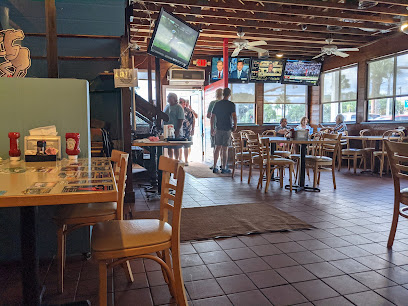
Beachcomber St. Augustine
Experience the flavors of the coast at Beachcomber St. Augustine, a family-friendly restaurant offering delicious seafood and stunning ocean views.
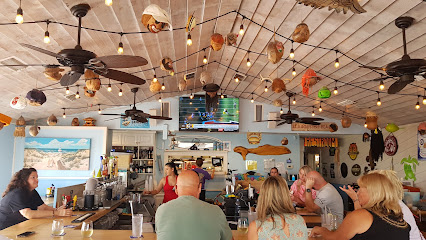
Mango Mango's
Experience the vibrant flavors and laid-back atmosphere at Mango Mango's, the ultimate dining destination in St. Augustine Beach, Florida.
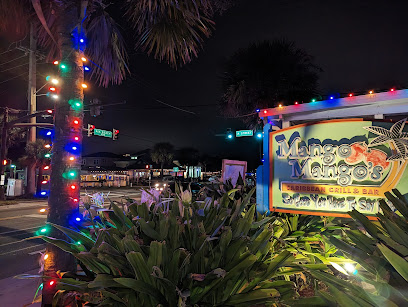
Redfrog & McToad's Grub-n-Pub
Experience the best of seafood and pub fare at Redfrog & McToad's Grub-n-Pub, a vibrant dining destination in St. Augustine, Florida.

Café Eleven Restaurant & Catering
Discover the culinary delights of Café Eleven, where exceptional food, coffee, and live music create an unforgettable dining experience in St. Augustine.

Obi's Fillin' Station
Explore the flavors of St. Augustine at Obi's Fillin' Station, a family-friendly diner serving delicious breakfasts and hearty burgers.
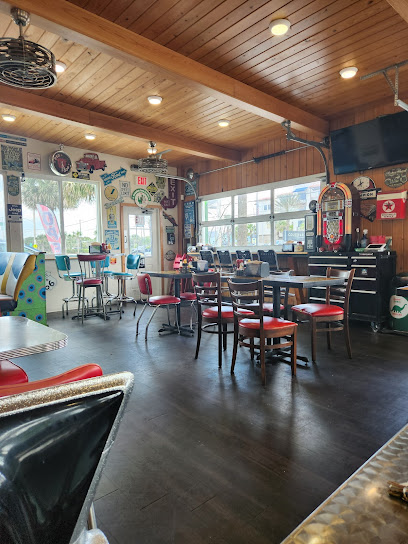
Hurricane Grill & Wings-St. Augustine
Experience the vibrant atmosphere and mouthwatering flavors of Hurricane Grill & Wings in St. Augustine, the ultimate destination for chicken wing lovers.
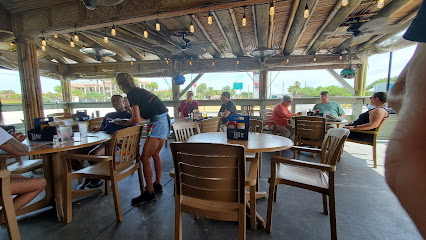
Amici Italian Restaurant
Experience authentic Italian cuisine at Amici Italian Restaurant in St. Augustine, where every dish tells a delicious story amidst a vibrant atmosphere.
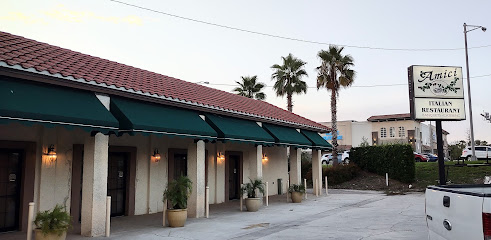
Trade Winds Lounge
Experience the vibrant cocktail culture of St. Augustine at Trade Winds Lounge, where creativity meets relaxation in a historic setting.
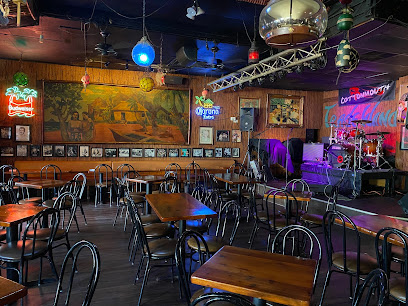
Odd Birds Cocktail Lounge and Kitchen
Discover the unique flavors of Odd Birds Cocktail Lounge and Kitchen in St. Augustine, where innovative cocktails meet a vibrant atmosphere.

White Lion
Experience the lively ambiance and extensive drink menu at White Lion, a top bar in St. Augustine's Historic District, perfect for tourists seeking fun.

Little Margie's FA Café
Experience the charm and local flavors of St. Augustine at Little Margie's FA Café, a beloved restaurant known for its delicious and affordable meals.
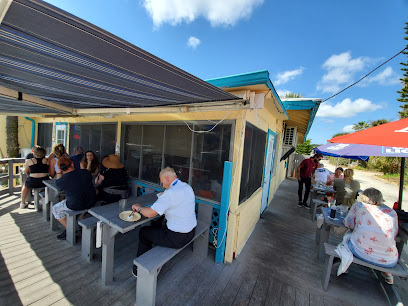
Taco Libre
Discover Taco Libre in St. Augustine: A vibrant Mexican eatery with mouthwatering tacos, burritos, and cocktails by the beach.
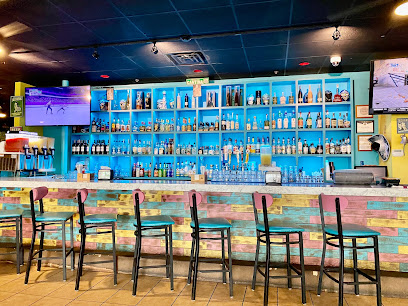
Local Phrases about St. Augustine Beach
-
- HelloHey
[hey] - GoodbyeLater
[lay-ter] - YesYeah
[yah] - NoNah
[nah] - Please/You're welcomePlease/No worries
[pleez/no wuhr-eez] - Thank youThanks
[th-anks] - Excuse me/SorrySorry
[sor-ee] - How are you?How you doin'?
[how yoo doo-in] - Fine. And you?Good. You?
[good yoo] - Do you speak English?You speak English?
[yoo speak ing-lish] - I don't understandI don't get it
[i don't get it]
- HelloHey
-
- I'd like to see the menu, pleaseMenu, please
[men-yoo pleez] - I don't eat meatNo meat for me
[noh meet fohr mee] - Cheers!Cheers!
[cheers] - I would like to pay, pleaseCheck, please
[chek pleez]
- I'd like to see the menu, pleaseMenu, please
-
- Help!Help!
[help] - Go away!Go away!
[go away] - Call the Police!Call the cops!
[call the cops] - Call a doctor!Call a doc!
[call a doc] - I'm lostLost
[lost] - I'm illSick
[sick]
- Help!Help!
-
- I'd like to buy...I want to buy...
[i want to buy] - I'm just lookingJust looking
[just look-ing] - How much is it?How much?
[how much] - That's too expensiveToo expensive
[too ex-pen-siv] - Can you lower the price?Lower the price?
[low-er the price]
- I'd like to buy...I want to buy...
-
- What time is it?What time?
[what time] - It's one o'clockIt's one
[its one] - Half past (10)Ten thirty
[ten thur-tee] - MorningMorning
[mor-ning] - AfternoonAfternoon
[af-ter-noon] - EveningEvening
[eve-ning] - YesterdayYesterday
[yes-ter-day] - TodayToday
[to-day] - TomorrowTomorrow
[to-mor-row] - 1One
[wun] - 2Two
[too] - 3Three
[three] - 4Four
[four] - 5Five
[five] - 6Six
[six] - 7Seven
[sev-en] - 8Eight
[ate] - 9Nine
[nine] - 10Ten
[ten]
- What time is it?What time?
-
- Where's a/the...?Where's the...?
[wheres the] - What's the address?What's the address?
[whats the address] - Can you show me (on the map)?Show me on the map?
[show me on the map] - When's the next (bus)?Next bus?
[next bus] - A ticket (to ....)Ticket to ...
[ticket to]
- Where's a/the...?Where's the...?
History of St. Augustine Beach
-
St. Augustine was founded on September 8, 1565, by Spanish admiral Pedro Menéndez de Avilés. It holds the title of the oldest continuously inhabited European-established settlement in the continental United States. This coastal city served as a strategic military outpost for Spain and later became a melting pot of cultures, including Native American, Spanish, and African influences.
-
Built between 1672 and 1695, the Castillo de San Marcos is a formidable fortress constructed by the Spanish to defend St. Augustine from potential invasions. Made from coquina, a locally sourced shellstone, the fort has withstood numerous sieges and stands today as a testament to the city’s turbulent past. It is the oldest masonry fort in the continental United States.
-
In 1763, the Treaty of Paris ended the Seven Years' War and transferred Florida from Spanish to British control. St. Augustine became the capital of British East Florida. The British period saw the development of plantations and the introduction of new settlers, which significantly altered the demographic and cultural landscape of the area.
-
The second Treaty of Paris in 1783 resulted in the return of Florida to Spanish control. This period saw a resurgence of Spanish culture and influence in St. Augustine. However, the Spanish struggled to maintain control amidst increasing pressure from American settlers and neighboring territories.
-
In 1821, Florida was ceded to the United States by Spain under the Adams-Onís Treaty. St. Augustine continued to grow as an important port and cultural hub. The transition to American governance brought new economic opportunities, and the city began to develop its infrastructure.
-
During the Civil War, St. Augustine was initially held by Confederate forces, but it was seized by Union troops in 1862. The city's strategic coastal location made it an important asset for both sides. The war caused significant disruptions, but the city's historical buildings and fortifications remained largely intact.
-
In the late 19th century, oil magnate Henry Flagler invested heavily in St. Augustine, transforming it into a winter resort for the wealthy. He built the luxurious Ponce de León Hotel, now part of Flagler College, and extended his Florida East Coast Railway to the city, ushering in a new era of tourism and development.
-
St. Augustine played a significant role in the Civil Rights Movement of the 1960s. The city was the site of numerous protests and demonstrations, including those led by Dr. Martin Luther King Jr. The struggle for civil rights in St. Augustine highlighted the city's ongoing racial tensions and contributed to the national push for equality.
-
Today, St. Augustine Beach is a vibrant community that attracts visitors from around the world. Known for its beautiful sandy shores and rich history, the area has seamlessly blended its historical significance with modern amenities. The beach offers a variety of recreational activities, cultural events, and historical tours, making it a unique destination for history enthusiasts and beachgoers alike.
St. Augustine Beach Essentials
-
St. Augustine Beach is located on the northeastern coast of Florida. The nearest major airport is Jacksonville International Airport (JAX), which is approximately 60 miles away. From the airport, you can rent a car or take a shuttle service to reach St. Augustine Beach. Alternatively, you can fly into Orlando International Airport (MCO), about 120 miles away, and then drive or take a bus to the beach. St. Augustine also has an Amtrak station for those who prefer to travel by train.
-
Once in St. Augustine Beach, you can get around using various modes of transportation. Renting a car is a popular option for flexibility. The Sunshine Bus Company offers public transportation within St. Johns County, including routes that connect St. Augustine Beach with downtown St. Augustine. Taxis, ride-sharing services like Uber and Lyft, and bicycle rentals are also readily available. For a unique experience, consider riding the Old Town Trolley Tours, which offer guided tours with hop-on-hop-off options.
-
The official currency is the United States Dollar (USD). Credit and debit cards are widely accepted in hotels, restaurants, and shops. ATMs are available throughout the area for cash withdrawals. It's a good idea to carry some cash for smaller establishments and tips.
-
St. Augustine Beach is generally a safe destination for tourists. However, it's always wise to take standard precautions. Avoid isolated areas at night and be cautious with your belongings in crowded places. Some areas in the nearby city of St. Augustine, such as parts of West King Street, have higher crime rates, so exercise caution if you venture there. Always keep your emergency contacts and local emergency numbers handy.
-
In case of an emergency, dial 911 for immediate assistance. St. Augustine Beach has a local police department and several medical facilities, including Flagler Hospital, which is equipped for emergencies. Pharmacies are also available for over-the-counter medications. It's advisable to have travel insurance that covers medical emergencies.
-
Fashion: Do wear casual and comfortable beachwear, but avoid overly revealing clothing in public areas. Religion: Do respect local customs and traditions, especially when visiting historic churches and religious sites. Public Transport: Do be courteous and offer your seat to elderly passengers. Don't eat or drink on public transport. Greetings: Do greet people with a friendly 'hello' or a handshake. Eating & Drinking: Do try local seafood and other specialties. Don't forget to tip your servers, as it is customary in the United States.
-
To experience St. Augustine Beach like a local, visit the St. Augustine Beach Pier for fishing or simply to enjoy the view. The St. Augustine Amphitheatre hosts various events, including farmers markets and concerts, which are great opportunities to mingle with locals. Don’t miss the chance to explore Anastasia State Park for its beautiful natural scenery and recreational activities. For a taste of local cuisine, try a Minorcan clam chowder or fresh seafood at one of the local eateries.
Trending Landmarks in St. Augustine Beach
-
Castillo de San Marcos National Monument
-
St. Augustine Lighthouse & Maritime Museum
-
Old Town Trolley Tours St Augustine
-
Ripley's Believe It or Not!
-
Ponce de Leon's Fountain of Youth Archaeological Park
-
Anastasia State Park
-
Old Jail Museum
-
Lightner Museum
-
Fort Matanzas National Monument
-
Cathedral Basilica of St. Augustine
-
Marineland Dolphin Adventure
-
Potter's Wax Museum
-
Guy Harvey Resort St. Augustine Beach
-
Vilano Beach Fishing Pier
-
Bridge of Lions
Nearby Cities to St. Augustine Beach
-
Things To Do in Jacksonville
-
Things To Do in Daytona Beach
-
Things To Do in Gainesville
-
Things To Do in Ocala
-
Things To Do in Orlando
-
Things To Do in Tampa
-
Things To Do in Clearwater
-
Things To Do in Sebring
-
Things To Do in St. Petersburg
-
Things To Do in Hilton Head Island
-
Things To Do in Ft. Pierce
-
Things To Do in Beaufort
-
Things To Do in Tallahassee
-
Things To Do in Sarasota
-
Things To Do in Stuart


